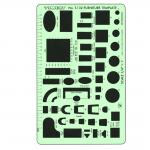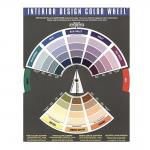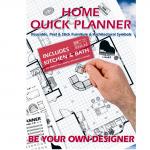Furniture terms P - R
The Whole Truth & Nothing but the Truth! There are links and ads on this site that pay us a commisson if you "click" and purchase something. This helps us to keep the lights on and continue to provide free content. Thanks! Now you may continue reading!
Parquetry: In furniture, this is method of creating geometric patterns either with thin solid wood or veneer.
Particleboard: Man made wood product that is made from small pieces of waste wood mixed glue and put under pressure. Particleboard is usually made into four by eight foot sheets.
Patina: The hue, sheen and texture that wood and metal get with age.
Pedestal table: This term refers to a table that is supported by one or two, vertical columns attached to the bottom of the tabletop. The pedestals usually have legs attached to them for added stability.
Pediment: In furniture, this refers to the area above the cornice. The pediment is generally merely a decorative piece.
Pilaster: A vertical, thin and narrow piece of wood that runs to near the top of a case piece and mimics support for the top. Although pilasters are mainly for decorative purposes, in modern times they have been used to connect to doors on a case piece in a way that allows the door to swing back parallel to the sides of the case.
Pinnacle: A carved or turned decorative item placed at the top of a piece of furniture.
Plain Sawn: A method of cutting lumber that results in an appealing tight grained appearance. Because of the high cost of quarter sawn wood, plain sawn or rift cut is often mixed in with quarter sawn in furniture production.
Plywood: Sheet stock that is made from thin layers of wood glued together. Plywood is easier to work with in some ways, than fiberboard. It will hold a screw or nail better than other man made wood products. On the downside, medium density fiber board is less prone to warping than plywood. Plywood can have gaps and knots and if it gets seriously wet, it falls apart.
Pull-up Chair: An occasional chair that is light enough to move up to a table or into the living room as needed.
Quirk: A thin groove used to add eye appeal or to break up the look of a plain trim piece.
Failure to plan is the most common furniture mistake. Be sure to check out the wide selection of furniture space planners, color wheels and furniture templates available from Furniche.com
Rabbet: An edge cut or a technique of joinery.
Racking: Torquing or twisting of a case piece. If a chest of drawers, for example, is tipped on about a thirty degree angle and then turned toward the front or the back, the frame should remain rigid; it should not twist. Racking usually indicates a poorly constructed case.
Rail: A horizontal piece on a door, drawer or chair that tops or is supported by vertical pieces or stiles.
Rake: The angle of a chair back. Often, on less expensive chairs, there is little or no raking making the chair uncomfortable. If a chair seat is not sufficiently scooped and there is no raking, it is very hard to stay on the chair.
Recliner: A chair that is capable of leaning back. The backward motion is usually tied to the raising of a foot rest. Many recliners now rock or swivel. Reclining, rocking and swiveling furniture are referred to as motion furniture.
Reeding: The opposite of fluting. Instead of parallel grooves being cut into wood, the accent is on the ridges that are left.
Refectory Table: A long rectangular table that has leaves that are attached to the table in some way that allows them to be pulled out from the ends.
Relief: A type of carving that involves cutting away the background and leaving the artistic elements appearing to be raised from the surface.
Restoration: returning a piece of furniture, as closely as possible, to its original condition. This process often involves the purchase or manufacture of replacement parts.
Riftcut or Riftsawn: A wood cutting technique in which, the grain of the wood at the face is between 30 and 60 degrees.
Rip Sawing: Sawing wood with the grain.
Rising Sun: A decorative treatment, often on chair backs, with a fan shape that resembles the sun’s rays at sun rise.
Rococo: A type of design that employs a profusion of shapes in an almost chaotic way. Similar to Gothic.
Rotary Cut: A way of shaving veneer, continually, from a log. The log turns while a blade cuts the veneer. The grain has a wild look that is not appealing in appearance. Most rotary cut veneer is used on construction grade plywood but much of it finds its way into less expensive furniture.
Rolltop Desk: A desk with a gallery in which a tambour slides in tracks cut into the sides of the gallery. Most rolltops follow an s-curve but some follow a quarter round path. Rolltops were very popular in the late Nineteenth Century with a strong revival in the last third of the Twentieth Century.
Rosette: A roselike carving or applique in architecture or furniture.
Runner: The wood strips on which drawers slide. The part of chair on which a rocker rocks.
Rush Seat: A chair seat woven with rushes ( a plant that grows in wetlands).







